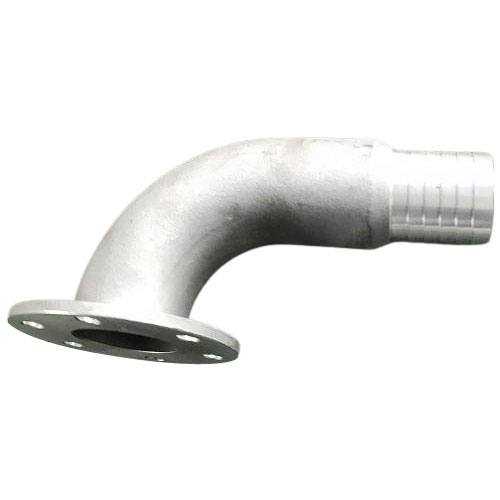The Benefits of Low Pressure Casting: Precision and Efficiency in Manufacturing
2025-03-21
Low pressure casting is a specialized manufacturing process that has gained significant popularity in various industries due to its ability to produce high-quality metal components with superior strength, precision, and efficiency. This method of casting allows manufacturers to create parts that meet strict quality standards, especially for industries where performance and durability are critical, such as aerospace, automotive, and electronics.
In this blog, we will dive into the fundamentals of low pressure casting, explore its benefits, and discuss the industries that benefit from this casting process.
What is Low Pressure Casting?
Low pressure casting is a process in which molten metal is forced into a mold under a low pressure, typically between 0.5 to 2 bars. This pressure forces the molten metal into the mold, filling all cavities, and ensuring that the metal reaches all areas of the mold. The process is often used to create parts that require complex geometries, high dimensional accuracy, and superior mechanical properties.
The main difference between low pressure casting and other casting methods (such as gravity casting) is the application of pressure. In low pressure casting, the pressure helps to improve the flow of molten metal, reduce porosity, and minimize defects in the final product.
How Does Low Pressure Casting Work?
The low pressure casting process involves several key steps:
1. Mold Preparation: The first step is to create the mold, typically made of a durable material like sand, metal, or ceramic. The mold is designed to match the exact shape of the component to be produced.
2. Molten Metal Pouring: Molten metal is heated to its liquid state in a furnace. Once the metal reaches the desired temperature, it is poured into the mold.
3. Pressurization: After the molten metal is poured into the mold, low pressure (usually between 0.5 to 2 bars) is applied to force the molten metal into all areas of the mold. The low pressure ensures that the metal fills the mold evenly and reduces the likelihood of defects such as voids or gas pockets.
4. Cooling and Solidification: Once the mold is filled with molten metal, the metal begins to cool and solidify. The cooling process must be carefully controlled to prevent unwanted stresses or defects from forming in the casting.
5. Mold Removal: After the metal has completely solidified, the mold is removed, and the casting is cleaned and inspected for quality.
Advantages of Low Pressure Casting
Low pressure casting offers numerous benefits over other casting methods, making it an ideal choice for a wide range of applications.
1. Improved Material Properties
One of the biggest advantages of low pressure casting is the improved material properties of the final product. The pressure applied during the casting process ensures that the molten metal fills the mold completely, reducing the risk of porosity and other defects that can weaken the material. The result is a high-density, durable casting with superior mechanical properties, including better strength, toughness, and resistance to fatigue.
2. High Precision and Dimensional Accuracy
Low pressure casting provides excellent dimensional accuracy and surface finish, which is essential for industries where precise parts are required. The application of pressure ensures that the molten metal flows evenly and fills every cavity of the mold, resulting in parts that have high dimensional consistency. This level of precision reduces the need for additional post-processing steps, saving time and money.
3. Reduced Defects and Porosity
Low pressure casting significantly reduces the occurrence of defects such as porosity, gas pockets, and air entrapment. The application of low pressure allows the molten metal to flow smoothly into the mold, eliminating voids and creating a more uniform cast. This is particularly important in industries like aerospace and automotive, where defects can lead to failures or compromised performance.
4. Complex Geometries and Thin-Walled Components
Low pressure casting is well-suited for producing parts with complex geometries, thin walls, and intricate designs. The ability of the pressure to push the molten metal into hard-to-reach areas allows for the creation of components with detailed shapes that would be challenging to achieve with other methods. This makes low pressure casting a popular choice for industries like automotive, where lightweight and complex components are essential.
5. Cost-Effective for Medium to Large Production Runs
While the initial setup for low pressure casting may be more expensive than some other methods, the process is cost-effective for medium to large production runs. The ability to produce high-quality parts in large quantities with minimal defects makes low pressure casting an attractive option for manufacturers who need to balance quality with cost-efficiency.
6. Energy Efficiency
Compared to high-pressure die casting and some other casting methods, low pressure casting tends to be more energy-efficient. The process requires lower pressure, which results in less energy consumption during the casting process. This makes low pressure casting an environmentally friendly option for manufacturers looking to reduce their energy costs and carbon footprint.
Industries That Benefit from Low Pressure Casting
Low pressure casting is used in a variety of industries where high-quality, precision components are essential. Some of the key industries that benefit from this casting method include:
1. Aerospace
The aerospace industry requires components that are lightweight, durable, and resistant to extreme conditions. Low pressure casting is used to produce critical parts such as turbine blades, engine components, and structural parts. The process ensures that these components are strong, reliable, and able to withstand the demanding conditions of flight.
2. Automotive
In the automotive industry, low pressure casting is used to produce lightweight, high-strength components such as engine blocks, transmission housings, and suspension parts. These parts must be able to withstand high levels of stress and heat, making low pressure casting an ideal solution for creating parts that meet stringent performance standards.
3. Medical Devices
Low pressure casting is also used to manufacture components for medical devices, such as prosthetics, surgical instruments, and implants. The precision and high material quality provided by low pressure casting ensure that these parts meet the necessary safety and performance standards.
4. Electronics
The electronics industry uses low pressure casting to produce components such as heat sinks, enclosures, and connectors. The ability to create parts with complex geometries and high thermal conductivity is essential in electronics, where heat dissipation and dimensional accuracy are critical.
5. Industrial Equipment
Low pressure casting is commonly used in the production of industrial machinery and equipment components, including gears, valves, and pump housings. The strength, precision, and durability of parts made through this process are crucial for ensuring the reliable operation of industrial equipment.
Conclusion
Low pressure casting is a versatile and highly effective manufacturing process that offers a range of benefits, including improved material properties, high precision, and the ability to produce complex components. By applying low pressure to the molten metal, manufacturers can reduce defects, improve surface finish, and achieve dimensional accuracy that meets the needs of various industries. From aerospace and automotive to electronics and medical devices, low pressure casting continues to play a key role in producing high-quality components that meet the demanding standards of modern manufacturing.
For businesses seeking to improve their manufacturing processes and create superior products, low pressure casting offers a reliable, cost-effective, and efficient solution.



